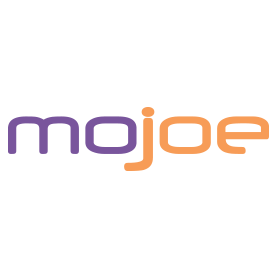New Website SEO Guide
Understanding the Challenge
Launching a new website represents a significant investment in your business’s digital presence. However, the completion of your website’s design and development marks the beginning, not the end, of your digital strategy. Without proper search engine optimization, your new website remains largely invisible to potential customers searching for your products or services online. New websites face a critical challenge in today’s competitive digital landscape. Search engines like Google do not automatically recognize or prioritize new domains. Your website must establish credibility, relevance, and authority—a process that requires deliberate optimization strategies implemented immediately following launch. Read on for a comprehensive guide to new website SEO.
The Business Impact of Neglecting SEO
The consequences of overlooking new website SEO implementation extend beyond simple visibility issues. Consider that 93% of online experiences begin with a search engine. When your website fails to appear in relevant search results, your business loses opportunities to connect with customers actively seeking your offerings.
Search engines treat new websites with a probationary period, often referred to as the “sandbox effect.” Without foundational SEO work, your site may struggle to gain traction in search rankings for six to twelve months, effectively ceding market share to established competitors during this critical growth period.
Furthermore, establishing poor SEO practices—or no practices at all—from the outset creates technical debt. Retroactive optimization requires significantly more resources than implementing proper SEO architecture from launch, both in terms of time and financial investment.
Essential New Website SEO Implementation Steps
1. Search Engine Registration and Verification
Begin by submitting your website to Google Search Console and Bing Webmaster Tools. These platforms serve as direct communication channels with search engines, allowing you to submit your XML sitemap and monitor how search engines crawl and index your site.
Your XML sitemap functions as a comprehensive directory of your website’s pages, helping search engines discover and understand your site structure efficiently. Most modern content management systems generate sitemaps automatically, but verification of proper sitemap formatting and submission remains critical.
2. On-Page Optimization Framework
Optimize your core pages using structured SEO elements:
Title Tags: Craft unique, descriptive titles for each page (50-60 characters) that incorporate relevant keywords while clearly communicating page content.
Meta Descriptions: Write compelling descriptions (150-160 characters) that encourage click-through from search results. While not a direct ranking factor, meta descriptions significantly influence user behavior.
Header Tag Hierarchy: Implement proper HTML header structure (H1, H2, H3) to organize content logically. Each page should contain one H1 tag that clearly defines the primary topic, with subsequent headers creating a clear content outline.
URL Structure: Ensure URLs are clean, descriptive, and keyword-relevant. Avoid dynamically generated URLs with excessive parameters when possible.
3. Technical SEO Foundation
Address technical elements that affect both search engine crawling and user experience:
Page Speed Optimization: Implement image compression, browser caching, and minification of CSS and JavaScript files. Page load speed directly impacts both search rankings and user engagement metrics.
Mobile Responsiveness: Verify that your website provides optimal viewing experiences across all device types. Google employs mobile-first indexing, making mobile optimization essential rather than optional.
SSL Certificate Implementation: Ensure your site operates on HTTPS protocol. Security has become a ranking signal, and browsers now flag non-secure sites, potentially deterring visitors.
Robots.txt Configuration: Review your robots.txt file to ensure search engines can access important pages while appropriately restricting administrative or duplicate content areas.
4. Local SEO Considerations
For businesses serving specific geographic markets, local SEO optimization provides significant value. Create location-specific content and service pages that target geographic search queries relevant to your business operations.
Google Business Profile (formerly Google My Business) offers substantial benefits for businesses with physical locations or those serving local markets. A properly optimized profile increases visibility in local search results and Google Maps. However, evaluate whether this investment aligns with your business model—fully online businesses without local service areas may allocate resources more effectively elsewhere.
5. Content Strategy Initiation
Establish a content creation schedule immediately following launch. Search engines reward websites that regularly publish valuable, relevant content. Consider developing:
- Educational resources addressing common customer questions
- Industry insights and analysis
- Case studies demonstrating your expertise
- Technical guides related to your products or services
Quality content serves dual purposes: providing value to your audience while establishing topical authority with search engines. This authority builds over time through consistent publication and natural link acquisition.
6. Analytics and Performance Monitoring
Implement comprehensive analytics tracking using Google Analytics 4 or comparable platforms. Effective measurement extends beyond vanity metrics like total traffic, focusing instead on meaningful business outcomes:
- Conversion tracking for key actions (form submissions, downloads, purchases)
- User engagement metrics (time on page, bounce rate, pages per session)
- Traffic source analysis to understand which channels drive qualified visitors
- Goal completion rates aligned with business objectives
Regular analysis of these metrics informs ongoing optimization decisions and demonstrates SEO ROI to stakeholders.
Advanced Optimization Strategies for New Website SEO
Once foundational elements are established, consider these advanced techniques:
Schema Markup: Implement structured data markup to help search engines understand your content context. Schema can enhance search listings with rich snippets, potentially improving click-through rates.
Internal Linking Architecture: Develop a strategic internal linking structure that distributes page authority throughout your site and guides users through logical content pathways.
Core Web Vitals Optimization: Focus on Google’s Core Web Vitals metrics—Largest Contentful Paint (LCP), First Input Delay (FID), and Cumulative Layout Shift (CLS)—which measure user experience quality and influence rankings.
Canonical Tag Implementation: Use canonical tags to address potential duplicate content issues and consolidate ranking signals to preferred URLs.
Establishing Long-Term Success
Successful SEO requires understanding that optimization is not a one-time project but an ongoing process. Search engine algorithms continuously evolve, competitor strategies shift, and user behavior patterns change. Your initial implementation creates the foundation, but sustained success requires consistent attention and adaptation.
The businesses that achieve dominant search visibility share a common approach: they recognize their website as a dynamic business asset requiring regular investment and refinement. Early adoption of proper SEO practices establishes competitive advantages that compound over time, as search engines reward sites with established authority and consistent quality signals.
Taking Action
Your new website represents a significant opportunity to establish or expand your digital presence. The optimization steps taken in the initial weeks and months following launch disproportionately impact long-term performance. Delaying implementation allows competitors to strengthen their positions while your investment generates minimal returns.
Effective SEO requires both technical expertise and strategic understanding of your specific business context, target audience, and competitive landscape. Professional guidance ensures efficient resource allocation and helps avoid common pitfalls that can hinder performance.
Contact Mojoe.net today to discuss how our SEO expertise can maximize your website’s potential. Our team develops customized optimization strategies aligned with your business objectives, ensuring your website investment delivers measurable results.

If you would like to discuss Your Website’s Search Engine Optimization with Mojoe.net or your website’s analytics, custom logo designs, overall branding, graphic design, social media, website design, web application, need custom programming, or custom software, please do not hesitate to contact us, call 864-859-9848 or you can email us at dwerne@mojoe.net.


Recent Comments